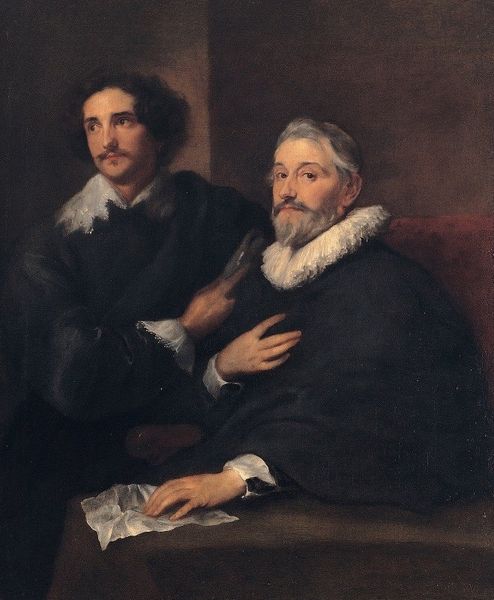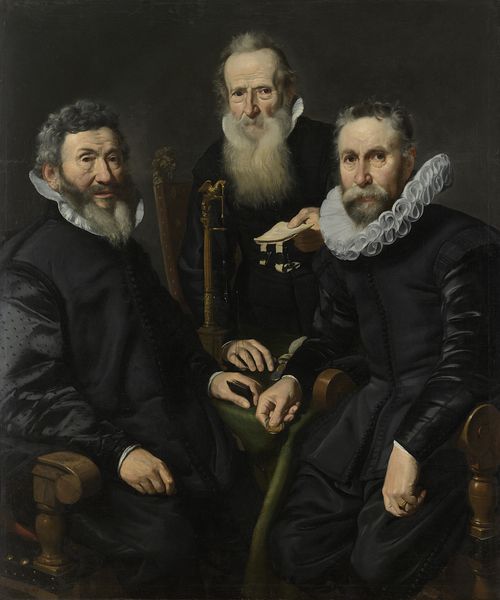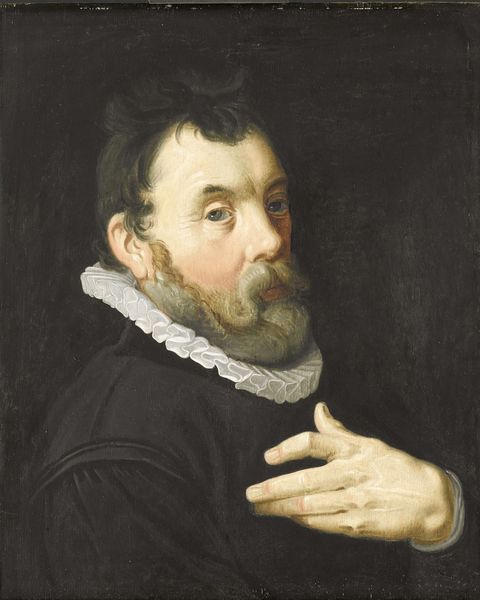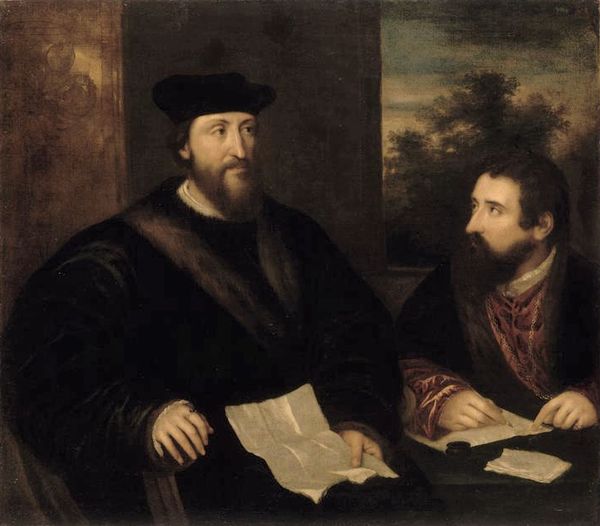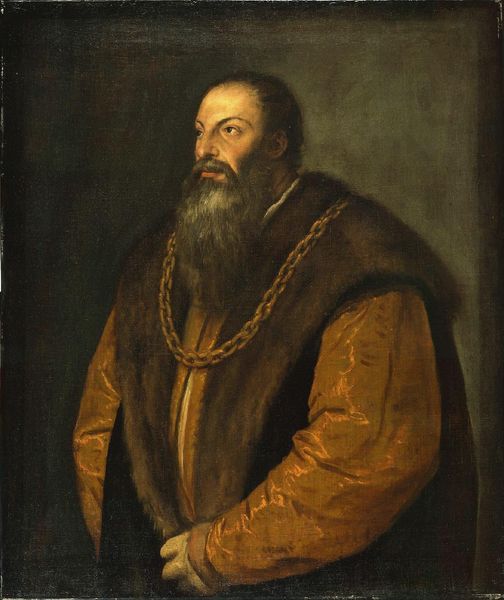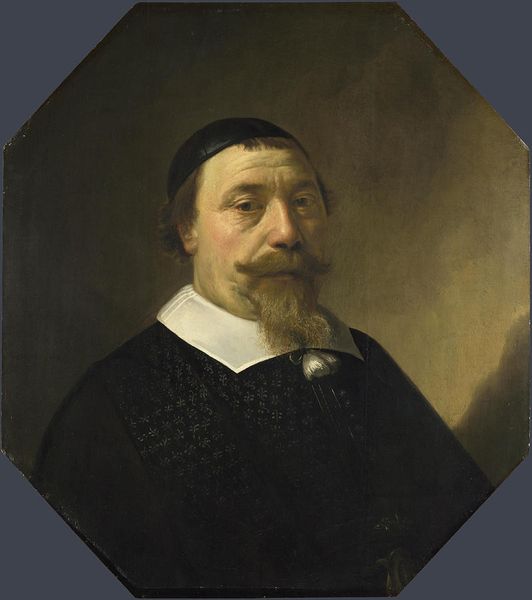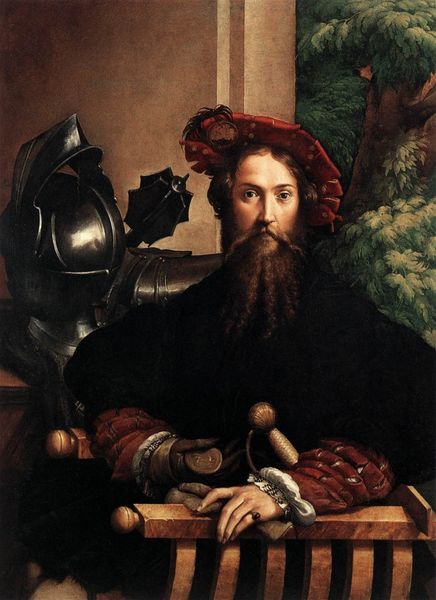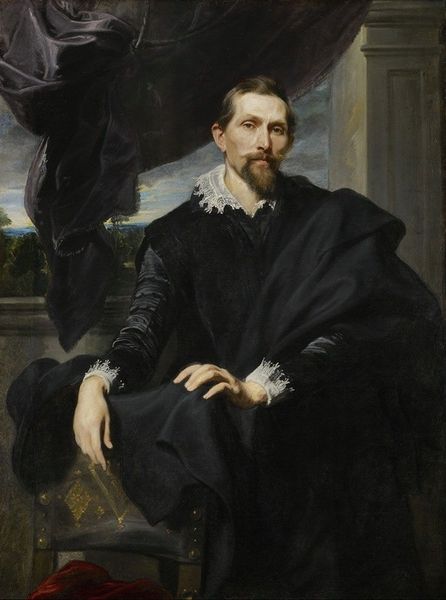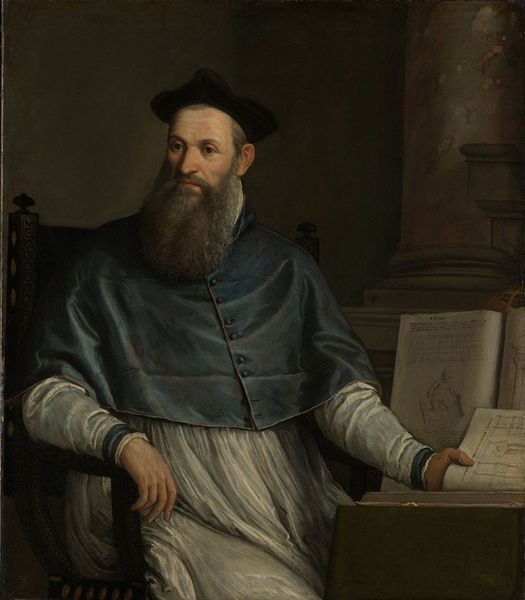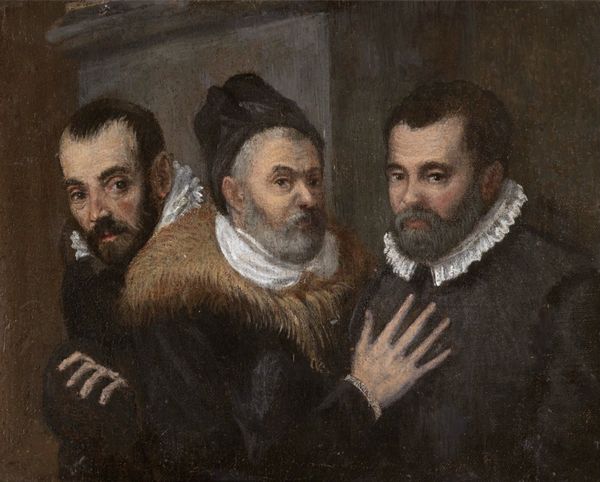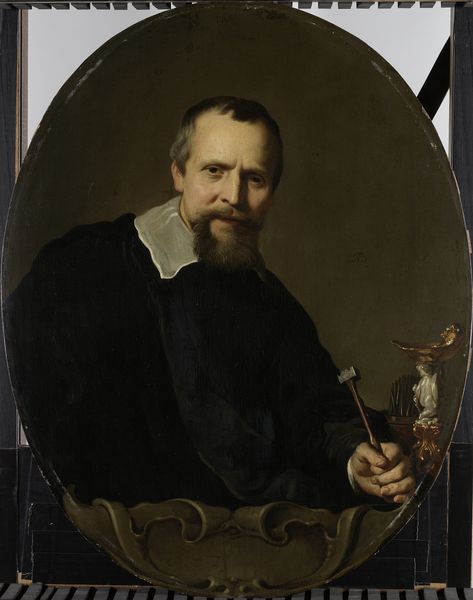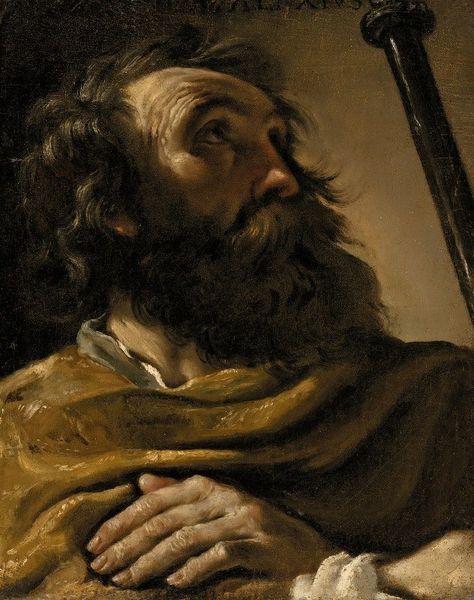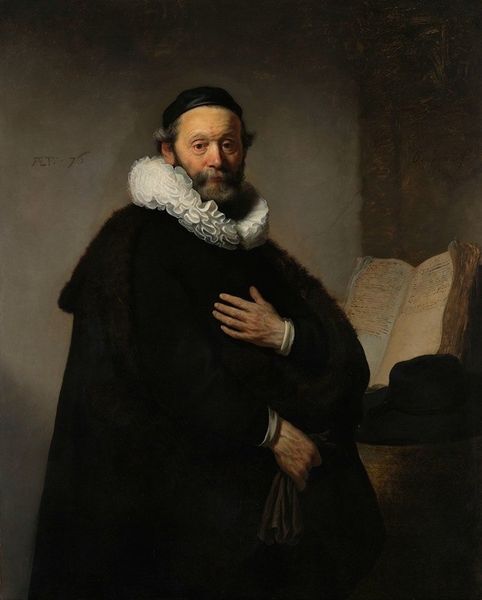
oil-paint
#
portrait
#
baroque
#
portrait
#
oil-paint
#
figuration
#
group-portraits
#
history-painting
Dimensions: 100 x 125.3 cm
Copyright: Public domain
Curator: The first thing that strikes me is the interplay of gazes and how it guides our reading of this dual portrait. Editor: I agree. And there's something somber about it, isn’t there? The subdued palette, the heavy shadows. It feels burdened by history. I'd like to invite our listeners to join us as we unravel some of these themes contained in this painting—it's believed to be William Dobson's *Portrait of Henry Stone with His Son.* Curator: Note the deliberate staging: the older man, Henry Stone, is seated, almost weighed down as you pointed out, while the son stands rigidly behind, his hand resting somewhat awkwardly on his father's chair. This speaks volumes, doesn't it, about generational weight and expectation? We can feel the historical context here, that sense of lineage. Editor: Absolutely. There is such strong patriarchal undercurrents from what we observe here, a power dynamic reinforced by the formal conventions of portraiture from the Baroque period. Notice the contrast between the detailed rendering of their faces and hands, compared to the darker, less defined background— a technique employed to heighten the subjects’ psychological intensity. And Dobson subtly infuses symbolism with this particular portrait, no? It’s clearly more than just two men, father and son—it’s the past leaning over the present, isn't it? Curator: Indeed! And notice how the light falls so dramatically upon the father's face, particularly drawing our attention to his eyes looking up, as if anticipating the future, while the son's gaze is more direct, grounded in the present moment. The symbolism of inherited responsibilities feels quite pronounced. I think, too, that Dobson's work marks a cultural memory being handed from one generation to the next in the painting’s historical context and artistic representations. Editor: Yes, and if we situate it within broader discussions of masculinity, we see how expectations, performance, and succession influence depictions of male subjects in art—it challenges and complicates conventional readings of portraiture from this period. I think looking through those lenses gives the image an unexpected emotional resonance. Curator: It’s really remarkable how Dobson has embedded this emotional narrative within the formal elements of portraiture. Considering how family lineages have always influenced positions within society—it definitely presents some important context and background. Editor: For me, approaching the painting by investigating the portrayal of patriarchal power, Dobson offers not just a representation but also an invitation to challenge its very foundations, as we can see that even Henry Stone, although portrayed as the figure of respect and high standing, also represents weakness in comparison to the stronger posture of his son behind him. Curator: Such complex interplays with so few apparent details. I will be seeing this painting with new eyes from now on! Editor: Precisely! A deeper and definitely insightful perspective to this baroque-era art from Mr. Dobson, that is for sure.
Comments
No comments
Be the first to comment and join the conversation on the ultimate creative platform.
